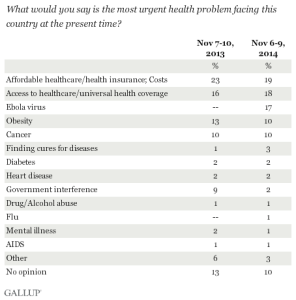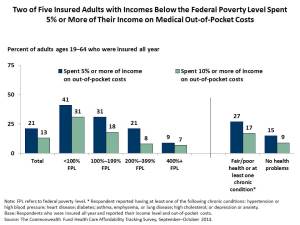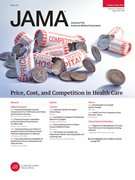
The top 3 urgent health problems facing the U.S. are closely tied for first place: affordable health care/health costs, access to health care, and the Ebola virus. While the first two issues ranked #1 and #2 one year ago, Ebola didn’t even register on the list of healthcare stresses in November 2013.
Gallup polled U.S. adults on the biggest health issues facing Americans in early November 2014, and 1 in 6 people named Ebola as the nation’s top health problem, ahead of obesity, cancer, as well as health costs and insurance coverage.
Gallup points out that at the time of the survey, only one of the four people diagnosed with the Ebola virus was still being treated, and the two survivors had been declared Ebola-free. (As of tonight, the second Ebola patient has died).
Health Populi’s Hot Points: This week marks the launch of Healthcare.gov, the health insurance marketplace channeling uninsured people to health insurance plans and subsidies to help pay for them. That health care costs and access continue to rank in the top two most urgent health problems facing the U.S. is telling in that insurance access is no guarantee for lower costs in the eyes of consumers.
Already-in sured people have seen their out-of-pocket health care costs growing over the past decade, according to The Commonwealth Fund’s report Too High a Price: Out of Pocket Health Care Costs in the United States, published last week. The proportion of employees covered by health insurance at work with a high deductible health plan rose to 80% this year from 55% in 2006. The average deductible was $1,217, and 2 in 5 workers had deductibles over $1,000.
sured people have seen their out-of-pocket health care costs growing over the past decade, according to The Commonwealth Fund’s report Too High a Price: Out of Pocket Health Care Costs in the United States, published last week. The proportion of employees covered by health insurance at work with a high deductible health plan rose to 80% this year from 55% in 2006. The average deductible was $1,217, and 2 in 5 workers had deductibles over $1,000.
Aon Hewitt’s report on employer-sponsored health trends was published last week, as well, and found that over the last five years, employees’ share of health costs (insurance premium contributions and out-of-pocket costs) will have grown over 52% in 5 years, from $3,389 in 2010 to $5,151 in 2015. Remember that in this period, workers’ wages have remained relatively flat.
 The role of transparency in efficient health care markets was covered in the October 22/29 2014 issue of JAMA, themed issue titled Price, Cost, and Competition in Health Care. The theory holds that posting physician and service prices can help consumers choose to be fiscally smart about health care purchasing, and can lower an individual’s cost curves which, together, can help to conserve costs in a community. However, for some people, knowing a cost in advance of receiving a service can also cause the unintended consequence of self-rationing care among some of the sickest people. Postponing necessary health services can lead then to the worse consequence of increasing the patient’s costs downstream….and exacerbate health conditions and the progression of disease.
The role of transparency in efficient health care markets was covered in the October 22/29 2014 issue of JAMA, themed issue titled Price, Cost, and Competition in Health Care. The theory holds that posting physician and service prices can help consumers choose to be fiscally smart about health care purchasing, and can lower an individual’s cost curves which, together, can help to conserve costs in a community. However, for some people, knowing a cost in advance of receiving a service can also cause the unintended consequence of self-rationing care among some of the sickest people. Postponing necessary health services can lead then to the worse consequence of increasing the patient’s costs downstream….and exacerbate health conditions and the progression of disease.
Ebola will run its course as many infectious diseases have throughout health history. Rising health costs in America, however, aren’t going to be cured anytime soon, even with the prospect of insuring more people. Getting to more artful health plan design for population health beyond the raw high deductible, especially for people managing chronic conditions, would go a long way to preventing the self-rationing problem that, ironically, results in higher costs for individuals, health plans and society at large.




 I'm in amazing company here with other #digitalhealth innovators, thinkers and doers. Thank you to Cristian Cortez Fernandez and Zallud for this recognition; I'm grateful.
I'm in amazing company here with other #digitalhealth innovators, thinkers and doers. Thank you to Cristian Cortez Fernandez and Zallud for this recognition; I'm grateful. Jane was named as a member of the AHIP 2024 Advisory Board, joining some valued colleagues to prepare for the challenges and opportunities facing health plans, systems, and other industry stakeholders.
Jane was named as a member of the AHIP 2024 Advisory Board, joining some valued colleagues to prepare for the challenges and opportunities facing health plans, systems, and other industry stakeholders.  Join Jane at AHIP's annual meeting in Las Vegas: I'll be speaking, moderating a panel, and providing thought leadership on health consumers and bolstering equity, empowerment, and self-care.
Join Jane at AHIP's annual meeting in Las Vegas: I'll be speaking, moderating a panel, and providing thought leadership on health consumers and bolstering equity, empowerment, and self-care.